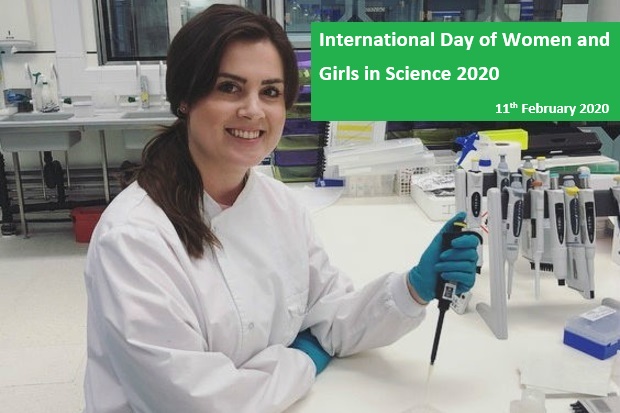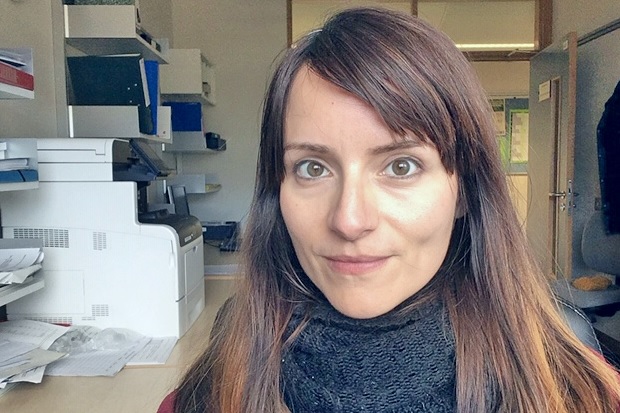
Today, Tuesday 11 February 2020, marks the fifth International Day of Women and Girls in Science (IDWGS). A 2017 World Economic Forum report infers that 65 per cent of children entering primary school today will have jobs that do not currently exist, many of which will require STEM (science, technology, engineering and maths) skills. In the UK, while girls account for 48% of GCSE STEM entries, only 26% of graduates in Core STEM subject areas are female. Why such a steep decrease in the space of a few years?
The importance of encouraging a new generation of female scientists to tackle the major challenges of our time, in part through challenging the stereotype that girls and women cannot like or do science, is greater than ever.
Celebrating early
On 3 February, we celebrated IDWHS early at the Defra Group Science Conference. Here, we presented some of the great work that APHA’s scientists (both men and women) do to the range of Defra Group scientists present. One of our posters highlighted that 61% of APHA Science Directorate posts are filled by women.
Additionally, Sharon Brookes, APHA Lead Scientist for Virology, gave an interesting talk in the career pathway session, describing her successes, inspirations and challenges on her journey to a scientific leadership role.

Working as a female scientist at APHA
I am a keen advocate of science outreach events and in November 2019, I was involved in running a ‘Grow From Your STEM’ event for 120 young women interested in choosing STEM subjects at A-Level.

The day consisted of a networking session, a panel questions and answers (Q&A) session directed at a range women STEM professionals and some STEM workshops. During the Q&A, the girls came up with lots of really good questions which I thought I would put to some of APHA’s female scientists. See their responses below.
Q&A Elsa Barrero, Veterinary Officer

What advice would you have for someone who is aspiring to be a veterinarian?
Study hard and get as much experience as you can. Volunteering at your local vet practice, with farm animals, in shelters and at laboratories are good ways to get an insight into the profession and find out what you really like. Then be prepared to change your mind and move into different fields of Veterinary Sciences because all have something fascinating to offer.
What do you think deters women from going into or staying in STEM careers?
From a young age, people around us have preconceived ideas about what a girl should like or be good at and we believe them. Many girls do not develop spatial or technological abilities to their full potential because they are pushed towards playing with dolls and kitchenettes, which is not bad so long as they are complemented with other types of games to promote different skills.
In my opinion, if women were allowed to explore freely and follow their curiosity without external pressure and judgement, there would be many more working in STEM.
Q&A Rowena Hill, Virologist

I joined APHA in June 2019 and worked predominantly on the rabies virus. I have now moved and am working on the influenza-A virus.
I have worked in high containment, undertaking serology tests on animal samples to detect deadly viruses such as rabies and influenza. I also look at the genetic makeup of viruses and aid in the development of national databases on disease occurrence in wild and farmed animals.
How long did you study for and at what age did you get your current job?
I studied for five years. After leaving school I went to college for two years to complete my A-levels and then had a year out doing several different jobs because I was unsure what career to follow. I finally chose science and began a three year bachelor’s degree when I was 19 in BioVeterinary Science at an agricultural college in Yorkshire.
I was very fortunate to start my job at APHA straight after I had handed in my last assignment and moved down south to eagerly start my scientific career at the age of 22. I hope to continue my studies perhaps undertaking a Master’s degree or PhD.
What is the most rewarding part of your job?
Being part of a team that aids in the development of treatments against disease which have made, and will continue to make, a huge difference to both animal and human health gives me a great sense of pride. I am also inspired by the astounding knowledge and expertise of the scientists I work with and being involved in potentially ground-breaking research is also very exciting. I learn something new every day and I love that.
If you have ever had a pet, chances are that it will have completed courses of varying vaccinations. But did you ever wonder how that vaccine was developed? When the vet sends away blood samples to ‘the labs’, did you ever question where they actually go? What are the testing processes? Who are the people underneath the white coats? There is something quite fulfilling about being a part of this unseen work force that affects the lives of both animals and humans every day.
Q&A Elisabeth Waller, Virology Scientific Officer

My current role is in the Rabies and Viral Zoonoses group developing new diagnostic tests to help us measure how protected animals and humans are against rabies. I also carry out routine testing of blood samples sent in from rabies vaccinated pets to make sure they are safe to travel outside the UK. I also look after some of our mosquito colonies, important in our research of disease vectors.
Do you feel like you are making a difference or helping others through your job and how?
Yes, being a civil servant, our accountability is to the public and our aim is to help improve the environment and the lives of animals and people across the UK. Working on many different projects means I get to appreciate the breadth of the work we do to achieve this.
Every day I get to experience new challenges, pushing myself to learn and develop new skills. I understand more about the impact our work has on the lives of the public and the animals in the UK. Most of all, I do what I love most - working on viruses!
If you did not have the job that you have now, what would you do and would it be STEM-related?
I actually wanted to be a classicist! I was convinced I was going to university to study art history and ancient Greek. But it all changed when I caught swine flu during the epidemic in 2009 and became interested in viruses! This led me to study Biomedical Sciences at Durham University, followed by a masters in Medical Microbiology at the London School of Hygiene and Tropical Medicine where I really got to dig deep into the world of virology.
Q&A Beth Savagar, PhD student.
I am in my first year of study for my postgraduate doctoral degree (PhD), on a placement in the Biomathematics & Risk Research workgroup. I work alongside risk analysts, modellers and statisticians, who provide scientific evidence for policy formulation and outbreak response.
What subjects did you take at A-level and did they affect your job options?
On my route to a PhD I did not gain experience exclusively in science, but at no stage has this been a disadvantage to me, if anything I think it has been advantageous in broadening my experiences and development. I actually really struggled to decide on my A-level subjects and although interested in science, at one stage was planning on taking history, English, Spanish and French! I finally decided to study science subjects, thinking it would be easier to maintain an interest in humanities outside of my studies. If you are unsure about your future plans but science is one of your options I would strongly recommend taking two sciences and filling the remaining one or two A-levels with your other interest areas. Many universities require two sciences for entry onto their science degrees, so this is a good way to keep your options open.
I initially applied for biochemistry at university but switched to biology after realising that I preferred studying the more tangible aspects of the world around me, rather than enzymes and proteins. After graduation, I worked for a social mobility charity in STEM outreach for two years. Whilst not working directly within science, the opportunity provided valuable experience and transferable skills. After two years working in a non-scientific role, I was accepted into a joint PhD between the Royal Veterinary College and APHA and am now working on a project looking at the movements of pigs and hauliers in the UK as part of my first year of PhD study.
What is the most rewarding part of your job?
I enjoy that the work I am involved in has significance in the real world and knowing that I am contributing towards this is very motivating. In addition, working within the epidemiology department offers the opportunity to continuously develop new skills. The work I do is demanding but it is also hugely stimulating and makes me feel like I am developing myself personally and professionally every day. Being able to work in this kind of environment and apply these skills to important research is what I find most rewarding.
Q&A Dr Sara Downs, Lead Analytical Epidemiologist

I am the lead analytical epidemiologist for bovine tuberculosis (TB) in cattle. Epidemiology is the study of the incidence and spread of a disease and my work is focused on evaluating different ways to control and eradicate bovine TB, which is commonly found in parts of the UK. I aim to identify the risk factors for the disease and the possible transmission pathways between cattle, between cattle and wildlife and the environment.
Who or what was your inspiration?
I decided that I wanted to work in public health as an undergraduate studying biological sciences, whilst sitting in a lecture about the factors that led to improvements in public health. I was inspired by the great advances in public health and reductions in death rates were due to reductions in over-crowding and provision of clean water that started to occur at the beginning of the last century, before antibiotics were developed.
How long did it take you to be in the role you are in today?
I embarked on a research career in 1994, when I undertook a Master’s in Epidemiology. I worked for 10 years in research into environmental factors that affect respiratory health in humans, undertaking a PhD along the way. I then switched subject areas and have worked for 13 years in veterinary epidemiological research; mainly bovine tuberculosis. I reckon it takes around 10 years to get to grips with a research area. So choose your research area carefully!
Find out more
You may also wish to read our Votes for Women blog series, which explores the careers and experiences of women working for the APHA over the last century.
In addition, why not follow the official IDWGS Twitter account as they celebrate the achievements of women in science from past and present, who have paved the way for future generations of scientists.

Recent Comments